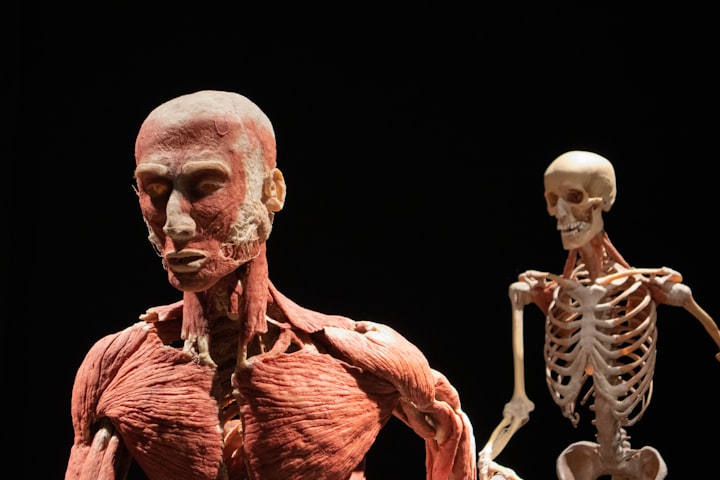Human body part that will evolve over time
Anatomy of complete Evolution
The human body is this perfectly balanced machine, right? Well, not when I'm using it. Normally, all its parts work seamlessly together to keep us thriving and well alive. Each of our organs is essential for our day-to-day activities, from breathing and walking to talking and coming up with bright ideas that push humanity forward. But are they really essential? Do we really need all those body parts, or are some of them just ancient relics that we got stuck with in this weird game of evolution?
Take wisdom teeth, for example. Nah, somebody already took mine. Yeah, those pairs of teeth stuck in the back of your mouth that you often have to go to the dentist for. They're also known as third molars, and while they can be used to chew food, a lot of people think they're just unnecessary. Around 22% of people worldwide don't even have all four of them. When they do grow in, they're most likely to become impacted, meaning they get stuck in the jawbone sideways and can't properly come through the gums. It's all because our jaws are often too small to accommodate these extra guys. Some smart scientists think that's because we've evolved to have smaller jaws over time. Recent evidence also shows that what we eat as kids might also be to blame. Apparently, munching on hard-to-chew foods like raw veggies and nuts can actually stimulate jaw growth, while eating soft processed foods can kind of stunt it. And that leaves little space for our back teeth to come in and, you know, do their thing. Will they disappear altogether in the future? I guess we human mammals will just have to wait and see.
Now let's talk about the vomer nasal organ, or as I like to call it, the nose's secret instrument. You see, rodents and other mammals have this awesome ability to communicate with each other using chemical signals called pheromones. And guess what? They have a special organ called the vomeronasal organ (VNO) that helps them detect these pheromones. Here's where it gets interesting. While most adult humans have something resembling a VNO in their nose, it turns out that it's basically a useless remnant. Neuroscientists even say that if you look at the anatomy of this organ, you won't see any cells that resemble those of similar organs from other mammals. Also, this organ in humans doesn't seem to be communicating with the brain either. Now, it's not all bad news. Even though the human VNO is pretty useless, it looks like it still might respond to some pheromones. Will humans keep this organ on their evolutionary to-do list? For now, I'd place it in the maybe pile.
Now, here's a tail. Animals that feature tails need these structures for a lot of things – some for balance, others for navigation, while some are needed to attract potential partners. But did you know that when we're just a few weeks old in our mother's belly, we actually have tails too? That's right, we have a whole little tail complete with vertebrae. As we develop, that tail magically disappears, and we're left with our trusty tailbone. Humans and apes are unique in that we don't have tails. Unlike other primates, it's a mystery why apes lost their tails, but we can all agree that it makes us stand out in a crowd. However, once in a blue moon, a human is born with a little vestigial tail. Cute, right? Well, don't get too excited because these tails don't have vertebrae and can sometimes be associated with a tricky condition of the spine. Either way, these tails are usually harmless and can be easily removed with a quick surgery. And let's be honest, it's not like we're going to miss it. After all, who needs a tail when you have arms and legs to get around? Plus, can you imagine trying to find pants that fit with a tail sticking out the back? Not a good look. There's little to no chance humans will end up needing tails in the future, so I'm guessing the tailbones are bye-bye in future generations.
Humans also have a funny little fold of membrane in the inner corner of the eyes called the plica semilunaris. It's basically what's left of a third eyelid, which is still found in some animals like gorillas and other primates. But here's the funny thing – even our close relatives, the chimpanzees, have this little fold that appears to be useless too. So, we're not alone in this eye quirkiness. Speaking of unusual membranes, they serve a variety of functions in different animals, such as protecting the eye from dirt and moisture or hiding the iris from predators. Some species can even see through their transparent membranes when they're underwater or underground. Now, the reasons why we humans lost our third eyelid are still a bit of a mystery. Maybe changes in our habitat and eye physiology made it unnecessary, or maybe we just evolved to be too cool for a third eyelid. Who knows?
With or without vestigial organs, it's interesting to imagine what humans might look like in the future. Many organs have become obsolete because of our lifestyle changes. Care to have a peek into what we might look like in the future? And in the same vein (or artery), have you heard of the concept of "text claw"? It's where you spend so much time typing on your phone or laptop that your hand starts to cramp up like a claw. And that's just one of the physical changes that could happen to us if we don't take care of our bodies in this tech-heavy world. But it's not just our hands that are affected. We could end up with 90° elbows from constantly holding our devices at that angle, and even a smaller brain from all the distractions and information overload.
Now, I know what you're thinking – we just can't give up technology and go back to the Stone Age. And you're right, we don't have to. But we do need to be aware of the potential negative effects and take steps to reduce their damage. That's why a team of designers put their creative efforts together to present Mindy, a future human whose body has physically changed due to the constant and never-ending use of smartphones, laptops, and other types of maniacal devices. While Mindy's exaggerated changes may not be in our future, the concerns behind them are real.
So, what can we do? Well, one suggestion is to take regular breaks from our screens and stretch our legs a little. Maybe even encourage some office yoga or dance parties to get the blood flowing. We don't have to give up technology completely, but we do need to be mindful of its effects on our bodies and minds. Many years in the future, we might even get smaller in size. One scientist reckons that if we were smaller, our bodies would need less energy, which would come in super handy on our increasingly crowded planet.
It's funny to think about how different our lives are now compared to when we were hunter-gatherers. Back then, we only had to interact with a handful of people each day. But now, remembering people's names is a super important trait, and it might even be something we grow to become better at. Or, technology might actually play a role in our evolution. Scientists believe that we could one day have implants in our brains
About the Creator
Kester Idebaneria
All readers are leaders







Comments
There are no comments for this story
Be the first to respond and start the conversation.